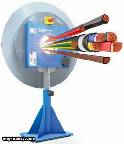Critical Parameters for an Efficient Double Skin Façade 1 from 2

The energy performance of a DSF is dependent on several factors. Following are some of the elements that may affect the overall performance of a DSF system.
– Natural vs. mechanically assisted Ventilation.
-Single story vs.
multiple story module – Glass layer properties and sequence Cavity size and depth.
– Shading device location and properties- Number and place of the inlets and outlets.
– The direction of the façade While a combination of CFD (Computational Fluid Dynamics) and AFN (Air Flow Network) modeling have been used to calculate the efficiency of a DSF system, the complexity of different factors involved make it difficult to accurately predict the efficiency of a DSE Integrating al HVAC system with Double Skin Facades There are now talks about how one can construct a “smart and intelligent building” that can integrate its HVAC/ Building Management Systems (BMS) with the DSF to manipulate lighting heating and ventilation requirements in the building.
These could include windows and shading systems with optical and thermal properties that can dynamically change in response to climate and occupant preferences.
These include motorized shades, switch able electro chromic or gas chromic window coatings.
This combined with day lighting controls with l-2 hour notification and pre-cooling of thermal mass using nighttime natural or mechanical ventilation through windows with 24-hour notification can significantly reduce cooling and lighting loads.
Executing a DSF System Double-skin facades are significantly more expensive to install than conventional curtain wall systems considering only the cost of the installed facade.



